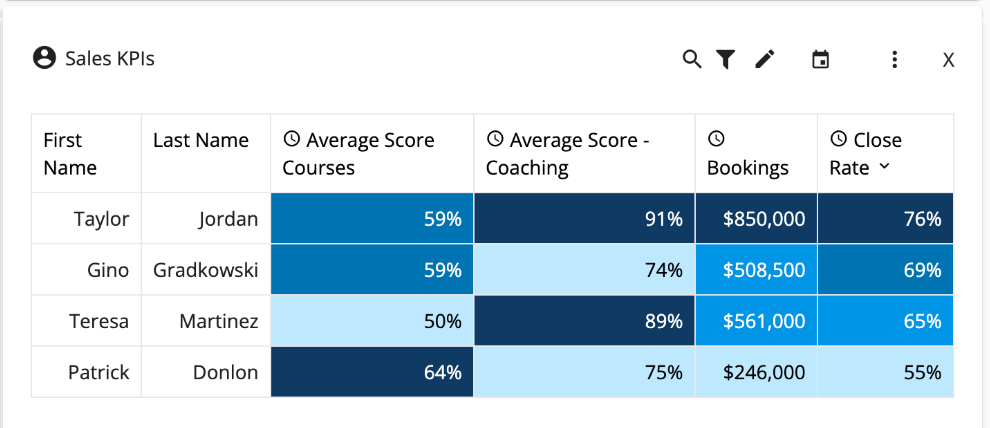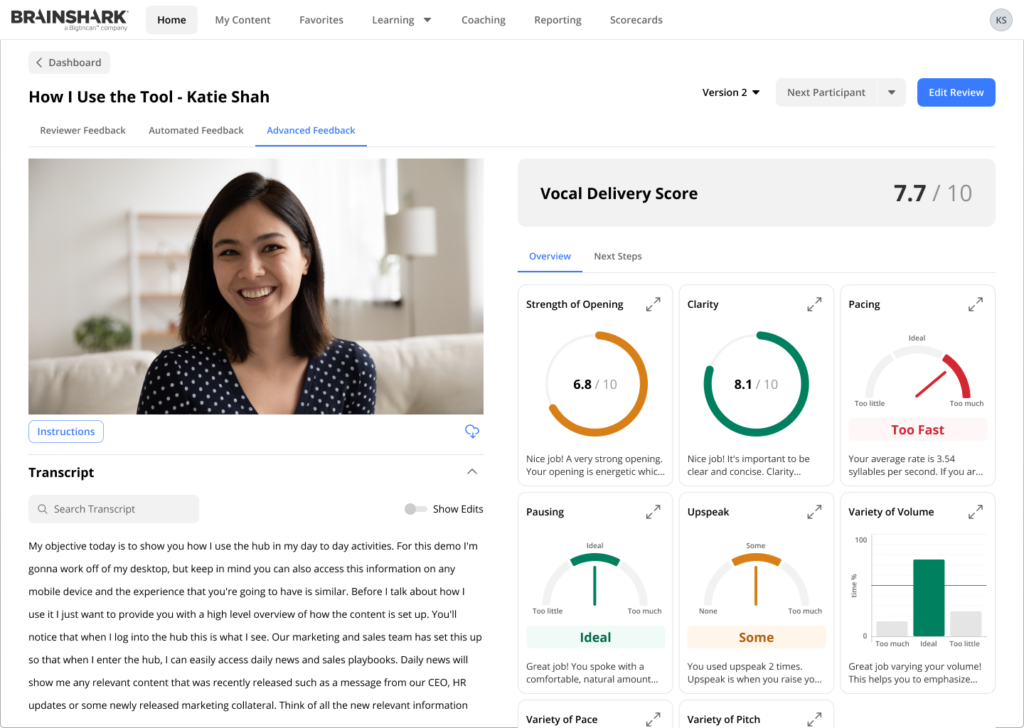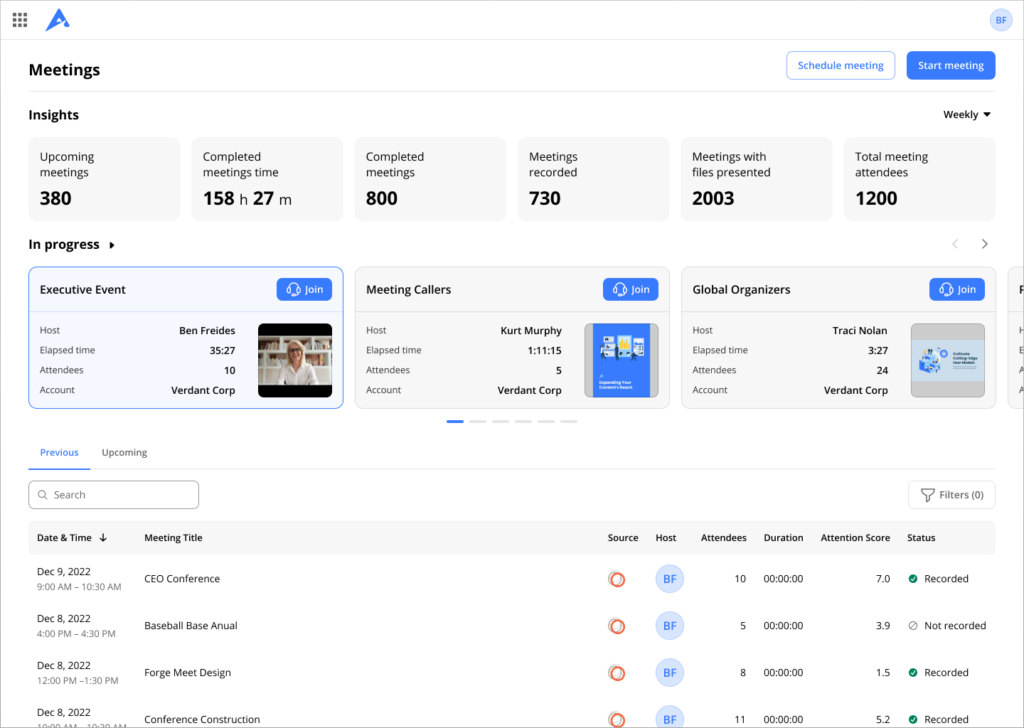Ever feel like your job is just sending messages about doing your job?
Gen Z and millennial knowledge workers spend 38 to 40 hours of their 40-hour workweek on communication, according to Grammarly’s 2024 State of Business Communication report.
When your team works across tools and time zones, communication is the job. But not all communication is created equal — and most teams treat it like it is. A quick Slack ping gets the same energy as a 1:1. A high-stakes handoff gets buried in a comment thread. We default to the same habits, no matter the moment, and the result is delays, confusion, and meetings that should have been emails.
The fix isn’t more communication. It’s better communication. That means knowing what message to send, how to send it, and when to shut up and listen.
In this article, we’ll break down:
- The real value of effective communication at work
- The different types of communication (and when to use them)
- Common pitfalls to avoid
- And practical tips to get your team talking (and working) better — with help from Bigtincan
What happens when workplace communication works
Poor communication is more than just annoying — it’s a top reason people quit. In fact, 61% of employees who are thinking about leaving say communication issues are part of the problem.
When teams know how to communicate clearly, across tools, time zones, and personalities, everything gets easier. Here’s what strong workplace communication actually does:
- Reduces conflict. When expectations are clear and people feel heard, there’s less room for passive-aggressive Slack threads or last-minute “why wasn’t I looped in?” moments. Clarity stops issues before they snowball.
- Makes teamwork smoother. Whether it’s two people co-editing a doc, or a cross-functional team working async across three time zones, good communication keeps collaboration moving without constant check-ins.
- Boosts productivity. Clear direction, defined roles, and less back-and-forth mean your team spends less time decoding vague messages and more time doing the work.
- Improves engagement. When people feel informed, included, and respected, they show up differently. Even a simple “great point” in a meeting or a thoughtful follow-up can make someone feel seen.
- Encourages people to stay. Open, respectful communication builds trust, and trust keeps people around. No one wants to stay on a team where feedback is unclear or nonexistent.
- Supports wellbeing. Especially on remote teams, regular and thoughtful communication builds connection. Even light-touch moments — a “how’s your week going?” or a well-placed emoji — can help people feel like they’re not working alone in the void.
The 4 types of workplace communication you need to get right
Workplace communication isn’t one-size-fits-all. It shifts constantly, based on the context, the tools, and the people involved. The best communicators know how to read the moment and adjust.
Here’s a breakdown of the four core types of workplace communication, and why they matter:
1. Verbal communication
This is the go-to for fast, direct conversations — in-person, on the phone, or over video. It’s your main mode during team meetings, client calls, 1:1s, or impromptu syncs.
For remote teams, regular video calls aren’t just about logistics . They’re about trust. A five-minute conversation can do more than five threads of back-and-forth Slack messages. It helps catch tone, clarify intent, and build real relationships (beyond the usernames).
2. Non-verbal communication
Think eye contact, tone of voice, posture, facial expressions. These cues add emotional weight and nuance, and most of us pick up on them instinctively in person.
But remote work strips a lot of that away. Without context, a short message might come off as cold. A long pause on Zoom might feel like disapproval. That’s why it’s important to over-clarify and actively manage tone in digital settings — and why voice and video still matter.
3. Written communication
For emails and DMs to proposals, briefs, and documentation, it’s less immediate, but more permanent — and critical for async work.
A clear message saves time. A sloppy one causes spirals. It’s the difference between “Can you take a look?” and “Can you review slide 5 for accuracy before EOD?” Specificity here is everything.
4. Visual communication
Presentations, videos, screen shares, dashboards, diagrams, and whiteboards all help explain complex ideas quickly and clearly. Visuals are especially powerful in distributed teams where context is limited and attention spans may be short.
Instead of talking through a product update for the fifth time, show it. A 2-minute Loom or annotated screenshot can often do the heavy lifting.
And remember: workplace communication also falls on a spectrum from formal (HR policies, performance reviews, leadership updates) to informal (Slack banter, emojis, memes). You need both. Informal communication builds trust. Formal communication sets expectations.
Bigtincan is a foolproof way for inside sales people to present and walk through our presentations and collateral. It has changed the way I interact with customers.
– Brent Chudoba, VP & GM at SurveyMonkey
The dos and don’ts of workplace communication
Getting workplace communication right means choosing the appropriate medium, using the best tools, and striking the perfect balance for each occasion.
Here are 5 dos and 5 don’ts to ensure you get it right every time.:
Do keep communications concise
When sharing information, keep it short and to the point. Whether you're speaking to one person or a group, be clear about what you need to get across, and avoid being repetitive or long-winded.
- Top tip: If you're using visual communications, make sure the messaging is clear and striking without being visually overwhelming. For example, Bigtincan’s Readiness Scorecards give a clear snapshot of sales reps’ progress to support coaching and revenue goals.

Don't overwhelm your people
Yes, communication is essential — but nonstop messages, meetings, and pings can tank productivity fast. For digital workers, the pressure to be “always on” means constant context-switching, late-night replies, and a never-ending stream of notifications. You end up with overwhelm, missed details, and way too many conversations that go nowhere
- Top tip: Use AI to work smarter, not louder. According to Grammarly’s report, 68% of knowledge workers say generative AI tools help them communicate more effectively at work. That might mean summarizing long threads, drafting follow-ups, or using Bigtincan to automatically capture calls, surface action items, and deliver the right content at the right time. It’s not just faster. It means communication that’s actually useful — and less of the kind that burns people out.
Do be authentic
People are emotional beings. They can sense if you’re simply going through the motions. If you’re celebrating sales wins, pitching to prospective clients or giving feedback, it’s important to be sincere, show empathy, and be mindful of the tone you use. This helps you create trust and build confident, open communications.
Think about a sales call where the rep says, “That’s a great question,” but it’s the fifth time they’ve said it, with the same flat tone, in the same call. It feels like filler, and it makes everything that follows feel less credible.
- Top tip: Tools like Conversation Intelligence can help sales reps practice and perfect their message and even their “vibe”, so that they communicate authentically, without sounding stilted or generic.

Don't shy away from tough topics.
Good communication isn’t just about celebrating wins. It also means tackling uncomfortable conversations with clarity and respect. If you avoid addressing performance issues or ignore tough client feedback, the problem doesn’t go away. It gets worse.
Say a rep keeps missing targets. If you’ve been skirting around it in 1:1s, that’s not feedback. It’s avoidance. Use check-ins or performance reviews to be direct about what’s going wrong and what needs to change. The same applies to client complaints. Raising issues early shows that you’re paying attention and committed to fixing them.
- Top tip: Tough conversations can be stressful in the moment. Using a tool like Bigtincan MeetingsAI helps by automatically capturing transcripts and summaries, so you don’t have to worry about taking notes or forgetting what was said. That way, you can focus on listening — and follow up with confidence.
Want more on how to handle the messy moments? Check out our guide, Roadblocks to Delivering a Competitive Buying Experience, for practical tips on navigating communication breakdowns with customers and keeping deals on track.
Do be consistent
Consistency isn’t about repeating the same script. It’s about making sure everything you say ties back to the company’s values, priorities, and goals. If your sales team is unclear on how to talk about pricing or positioning, they’ll fill in the blanks — and not always in the right way. That’s how you get ten different pitches for the same product. But when expectations are clear, your team can speak with confidence and represent the business accurately.
- Top tip: Use customizable slide templates and short video clips to keep onboarding and training content consistent and easy to access. Tools like RolePlayAI let reps practice real scenarios, so they can stay aligned without sounding stiff.
Don't communicate without a clear purpose
If you’re calling meetings without a clear goal or flooding inboxes with endless email threads, don’t be surprised when people stop paying attention. Vague updates and rambling messages just add to the noise and make it harder to spot what actually matters.
This applies to client communication too. Think about a sales email that buries the ask in three paragraphs of fluff. Or a follow-up deck that’s packed with slides but says nothing new. Prospects are busy, and if your message isn’t clear and valuable from the start, they’ll move on.
- Top tip: Use your communication analytics, whether your team uses Digital Sales Rooms, content engagement reports, or conversation scores (shown in the MeetingsAI dashboard below), to see what content and topics are actually landing. Are prospects clicking into your product one-pagers or dropping off after slide three? Are you losing their attention during virtual meetings or demos? Are some assets getting shared more than others? If key assets and messages aren’t getting engagement, it’s a sign they need sharpening.

Do tailor your messaging to the listener
Before you fire off a message or drop into someone’s calendar, ask yourself what they actually need. A sales rep probably doesn’t want a five-paragraph strategy update. They want one clear takeaway they can act on today. A content marketer, on the other hand, might need context, structure, and a bit of breathing room to think.
Tailoring your communication isn’t just about tone or format. It shows respect for their time, priorities, and how they process information. When you speak their language, you’re not just being thoughtful. You’re being effective.
- Top tip: Tools like Genie Assistant make it easier to tailor your messages. You can deliver personalized content to different audiences and get natural, relevant responses based on who you're talking to — whether that’s a sales rep who needs a quick answer or a prospect looking for deeper detail.
Don't leave anyone out
Unintentionally excluding individuals or groups from your workplace communications never ends well. It may just be an embarrassing, unprofessional faux pas. Or it could have a major impact, if it means a sales rep gives a customer outdated product information, or new compliance requirements are overlooked. What’s more, making staff feel isolated is one of the fastest ways to lose them.
- Top tip: A platform like Bigtincan can give your company a single source of truth, with role-based content distribution and tracking, so you can make sure everyone is kept in the loop.
Do listen
This cannot be said enough: Communication is a two-way street. As the ones with the front-line experience, your sales staff may often see issues arising long before you do. Employees need to be heard and leaders have a responsibility to empower them to communicate — and to listen actively and empathetically when they do. It’s only when communication flows easily both ways that there is real understanding.
- Top tip: Use surveys to poll your staff on what is working and what is not. Schedule and manage regular check-ins and reviews with Bigtincan Meetings, and make use of Gmail, Outlook, Salesforce and Slack integrations to give sellers the tools to communicate with their leaders and their peers.
Don't be afraid to step out of your comfort zone
Communication isn’t all smooth sailing. It often means being challenged, or hearing things you don’t expect — and responding well. Nothing prevents people from speaking up and sharing ideas like being shot down. A bone of contention from a customer, an unforeseen product problem, a leftfield suggestion for a new marketing campaign — it’s important to react to suggestions and concerns quickly and wisely.
Don’t be afraid to consider new ideas that buck your organization's norms, or to reward people for being innovative. That’s often how business grows.
- Top tip: Encourage new perspectives and creative approaches in your staff. Bigtincan offers a lot of tools to support this, like RolePlay AI to help sales reps rehearse and experiment with new pitches. Bigtincan Readiness makes bite-size, self-driven learning accessible, while collaboration tools allow for peer learning and innovation.

Improving communication at work takes time
Poor communication is a top source of stress for more than half of knowledge workers — and it’s dragging down productivity for 4 in 10. Fixing it starts with leadership. Building a strong communication culture isn’t a nice-to-have — it’s essential to how work gets done.
That means more than just swapping updates and commenting in docs. It means investing in emotional intelligence, practicing active listening, and using the right mix of verbal, written, visual, and non-verbal communication for the moment.
Tools like Bigtincan can help make that happen. From AI-powered meeting summaries and personalized coaching to collaborative pitch decks and smart content delivery, Bigtincan gives your team what they need to communicate clearly and actually connect.
Want to see what better workplace communication looks like in action? Watch the GenieAI™ Pro webinar to learn how top teams are using AI to simplify messaging, personalize training, and connect more effectively across sales, marketing, and operations.
